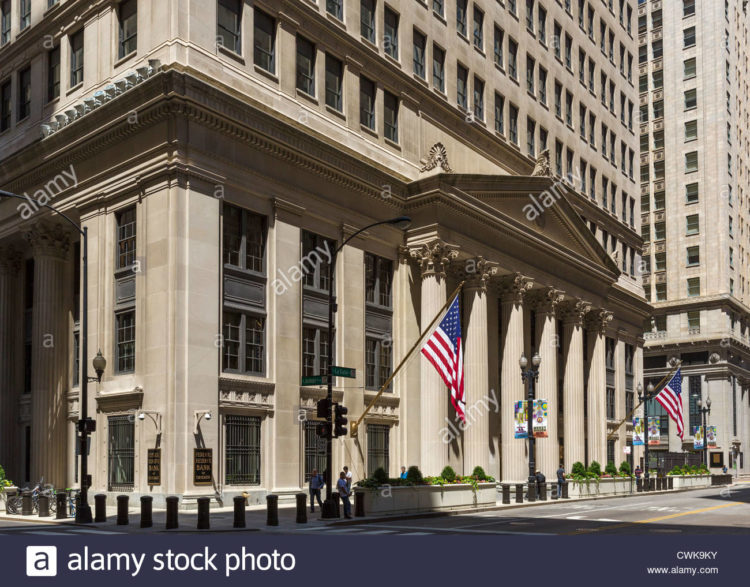Greenspan Fed Debut Shows Peril of Bond Traders’ Snap Judgments

(Bloomberg) —Marty Mitchell recalls how his colleagues on the trading desk at Perpetual Savings Bank in Virginia, along with the rest of the bond market, were stunned in June 1987 by the resignation of Federal Reserve Chair Paul Volcker and the choice of Alan Greenspan as his successor.
The long-bond yield soared more than 30 basis points that day and the dollar slumped nearly 2 percent as traders fretted over whether the man who was later dubbed “Maestro” would extend Volcker’s record of keeping a lid on inflation. Yields kept rising even after Greenspan, the chairman of an economic consultancy, took the helm in August. They didn’t peak until the stock-market crash in October, when he showed his mettle in the market’s eyes.
For a quintet of bond-market veterans — Mitchell, Dan Fuss, Lacy Hunt, Jack Malvey and Ed Yardeni — the history of 1987 and other Fed transitions over the last five decades underscores that investors should be wary of leaping on board the first wave of trading after President Donald Trump announces his pick for the next chair.
“Greenspan was kind of an unknown when he came, much like we are looking at today with some of the people,” said Mitchell, 54, former head government bond trader at Stifel Nicolaus & Co. and now an independent strategist. “Human nature is a bit comfortable with the person who is there for a while.”
Wisdom Distilled
The key lessons distilled from interviews with the five debt-market cognoscenti are as follows:
Initial market reactions to a Fed nominee don’t always last The Fed is like a slow-moving cruise liner, so don’t expect radical changes fast Bond traders can send a strong message to the Fed and alter its course You really don’t know a Fed chair’s worth until they face their first crisisBond traders have already reached some conclusions regarding Trump’s shortlist: former Governor Kevin Warsh, Stanford University economist John Taylor, current Fed Governor Jerome Powell, National Economic Council Director Gary Cohn and current Fed Chair Janet Yellen.
Warsh is seen as a hawk who will spur volatility, for example, while Powell or Yellen are expected to make for smoother sailing. Trump’s decision comes at a crucial time for the Treasuries market, with signs of wage growth spurring warnings of the end of the three-decade bull run.
Crisis as Opportunity
Every Fed chair “appointee has confronted initially some contemplation of weaknesses,” said Malvey, 65, formerly the chief global fixed-income strategist at Lehman Brothers Holdings Inc. “When Greenspan took office it was questioned how well he would do. But he was given the opportunity within months with the Oct. 19 stock-market crash — and he quickly flooded the system with liquidity and he provided it nearly for two decades.”
Greenspan was hardly a complete unknown, of course, having served as chairman of the Council of Economic Advisers. Still, it was hard for any candidate to follow Volcker, who ended the stagflation crisis of the late 1970s by ratcheting up rates.
Ben S. Bernanke, even though he had a background at the Fed, also raised some questions for bond traders.
Ten-year Treasury yields rose 6 basis points on Oct. 24, 2005, when Bernanke was named to replace Greenspan. A former Fed governor and chairman of the Council of Economic Advisers, Bernanke was seen continuing his predecessor’s tightening stance to combat rising inflation, though he still had to prove that to the market. Some speculated he’d push the Fed toward a policy of inflation targeting, yet his focus turned to orchestrating unprecedented monetary easing to fight the financial crisis.
Rising Voice
Bernanke’s efforts, continued by Yellen, also diminished the significance of the choice of Fed chair. That’s because in the past dozen years or so, there’s been a move to elevate all the voices on the Federal Open Market Committee, according to former Fed official Roberto Perli, now a partner at Cornerstone Macro LLC.
That’s another reason any initial angst over Trump’s choice may fade, even with the nomination of someone the market sees as an outlier.
“I’ve been watching this back since 1958,” said Fuss, 84, vice chair of Loomis Sayles & Co. “If you have a person coming in that others don’t really know, it’s harder because they have to build all the personal relationships. It doesn’t mean that they won’t be good — look at Greenspan — he turned out to be masterful.”
But certain traits are key to succeed as leader of the Fed, said Hunt at Hoisington Investment Management Co.
“You need someone that has a good grasp of the issues and is also able to stand up to the staff,” said Hunt, 75, the firm’s chief economist. “It’s a very, very critical job,” said Hunt, who favors Taylor and doesn’t share Yellen’s faith that lower unemployment will eventually lead to higher inflation.
Vigilantes’ Sway
The veteran observers had another takeaway: that the bond market has the power to alter a Fed chair’s plans. Politicians have learned that lesson as well, with President Bill Clinton adopting policies that cut deficits after the 10-year yield surged to 8 percent in 1994 from as low as about 5.2 percent in 1993, the year he took office.
Yardeni, 67, president of Yardeni Research Inc., coined a term for this bond-market bullying, in which investors act like “vigilantes.” He said part of the roughly one percentage point increase in 10-year yields during G. William Miller’s tenure in 1978-1979 was a result of markets concluding he wasn’t up for the job.
“Whoever comes in, if they do something that markets are not happy with, they’ll get the message pretty quickly,” Yardeni said. “It’s sort of the bond-vigilantes concept at a more diffuse level, where the markets do matter to the Fed, and the Fed in turn respects the markets’ influence on the economy.”



No Comment